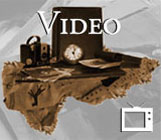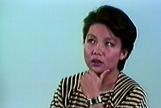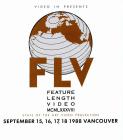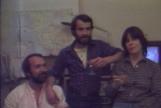1
"Alternative video’s technological parent is television. Precisely because of its shared genealogy, independent video explicitly or implicitly critiques television, while at the same time desiring its magnitude, its power, its elevation from being ‘of culture’ to being synonymous with it." - Jennifer AbbottVideo has inevitably been informed by its relationship to broadcast. The ways independent video makers most commonly responded to this challenge was to eschew broadcast, to attempt to subvert or improve it, or to strive for legitimization within it.
In the 1970s, Video Inn and Metro Media were actively engaged in attempts to influence policy at the Canadian Radio-television and Telecommunications Commission (CRTC). Unsuccessful at achieving an independent television station of their own, they joined a nation-wide coalition that kept pressure on commercial broadcasters to support community cable stations. Though not all goals were met, the inclusion of alternative video within cable programming led to some interesting local art experiments including "The Gina Show" and Byron Black’s "Images from Infinity". "Gayblevision", a community television program by lesbian and gay activists, arose at a time when the general public was still actively hostile to the LGBT community. While the gains made by the alternative community were, in the scheme of broadcast, minimal, these important cable experiments also provided production experience for the crews, which would be activated by artists and activists in other contexts.
Some artists who saw little hope of making an impact on the monolithic video-scape of broadcast attempted to devise new strategies for alternative broadcast methods for a larger audience. "Guerilla television" sought to create a parallel production and distribution system outside of broadcast’s conventional framework, while "pirate television", as the name suggests, meant sending unregulated, and therefore illegal, broadcast signals into the airwaves, sought to remove alternative video out of the closed-loop system of artist collectives and galleries.
When artists' distribution channels were established in the early 1980s, some distributors and artists pursued broadcasters, seeing network television as a possible venue and revenue stream for artists, just like art galleries and educational institutions were. Some educational channels, for example B.C.'s Knowledge Network , did integrate some video shorts (commonly under 20 minutes in length) into their programming. Artists were frustrated, however, by restrictions on content, lack of or minimal fees, and being given the poorest time slots.
SVES collective member, Sara Diamond, was one of the few who formed a successful partnership, co-producing a feature length work for Knowledge Network, "The Lull before the Storm," an experimental, feminist drama. However, the hope that video artists would gain credibility with broadcasters in any broader or more meaningful way, has not come to pass. As Vancouver artist Paul Wong put it:
"Successful individuals and broadcast projects with their integrity intact can practically be counted on one hand. Recent attempts to merge onto the electronic superhighway can best be summed up as little more than yielding on an unpaved road."
While video art may not have gained a prominent place on television, the aesthetic and structural experiments by video artists can be seen across the complete array of television genres from the first MTV music videos onward.
Sources:
Crista Dahl Media Library & Archive
"Making Video 'In'", Editor Jennifer Abbott, Video In Studios, 2000.
"Anamnesia: Unforgetting", Editor Amy Kazymerchyk, VIVO Media Arts Centre, 2013.
2
Peg Campbell: Telling our own stories2013
VIVO Media Arts Centre, 1965 Main Street, Vancouver, British Columbia, Canada
 Credits:
Credits:Interviewer: Kevin Doherty
Cameraperson: Anna MacDonald
Editor: Kevin Doherty
Transcript: Kevin Doherty
3
Minutes of the Steering Committee for Proposed Community Cable Television AssociationDecember 1975
Vancouver, British Columbia, Canada

5
"The Best of Gina": excerpt1979
Vancouver, British Columbia, Canada
 Credits:
Credits:Artist: John Anderson
Broadcaster: Cable 10 Vancouver
Host: Gina Daniels
6
"Images From Infinity" cable television show by Byron BlackCirca 1974-1975
Vancouver, British Columbia, Canada

7
Video Installation: "Confused: Sexual Views"1984
Vancouver, British Columbia, Canada
 Credits:
Credits:Director: Paul Wong
Producers: Gary Bourgeois, Gina Daniels, Jeanette Reinhardt, Paul Wong
8
FLV: Feature Length Video ExhibitionSeptember 15-18, 1988
Video In, 1160 Hamilton Street, Vancouver, British Columbia, Canada
 Credits:
Credits:Curator: Paul Wong and Karen Knights
Brochure Design: Joe Sarahan
